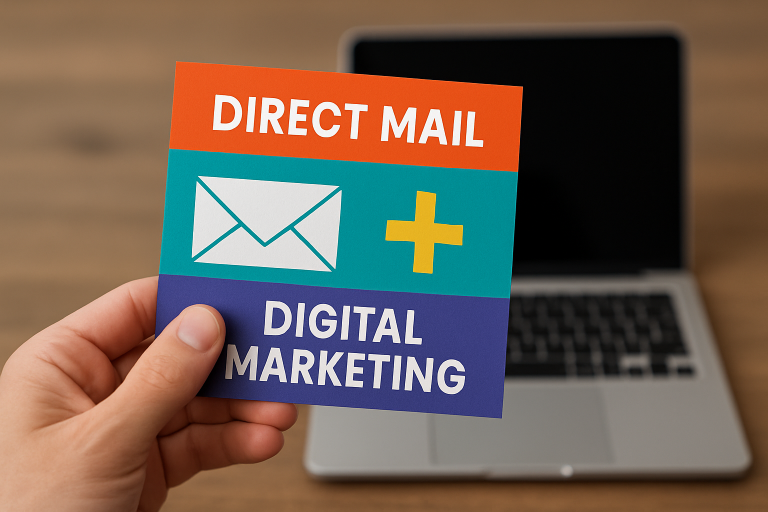Table of Contents
- 1 Why Direct Mail Still Matters
- 2 The Science Behind Direct Mail Engagement
- 3 Combining Direct Mail With Digital Marketing
- 4 Personalization: The Game Changer
- 5 Creative Formats That Grab Attention
- 6 Building Trust and Credibility
- 7 Sustainability in Modern Direct Mail
- 8 Best Practices for Effective Direct Mail Campaigns
- 9 The Future of Direct Mail in a Connected World
Why Direct Mail Still Matters
In an era where digital marketing saturates every screen, direct mail offers a powerful counterbalance. The tactile experience of holding a postcard or letter cuts through the noise, making campaigns more memorable and giving consumers a welcome pause from a constant online stream. Research supports this: households receive significantly less physical mail than emails, so pieces that land in the mailbox have less competition and make a stronger impression. When organizations choose local partners for their outreach campaigns, such as those specializing in direct mail printing Scranton, they benefit from tailored solutions that blend expertise with creativity for maximum impact.
Beyond mere novelty, the enduring value of direct mail comes from its ability to engage multiple senses. The feel of quality paper, unique designs, and even scent can add to the overall brand experience. This multisensory engagement not only captures attention but also builds a lasting memory association, which is often missing from digital-only initiatives.
The Science Behind Direct Mail Engagement
Modern neuroscience backs up the influence of physical mail. A Stanford Graduate School of Business study discovered that recipients process and retain direct mail messages longer than those from digital media. The physical act of handling mail triggers brain regions linked to emotion and memory, resulting in deeper engagement and more effective recall. For marketers, this means that investment in direct mail can pay dividends in terms of brand recognition and intent to purchase.
Combining Direct Mail With Digital Marketing
Integrated marketing campaigns harness the strengths of both print and digital. Savvy brands send postcards featuring personalized URLs (PURLs) or QR codes that beckon recipients online—or vice versa, inviting web audiences to look out for something special in their mailbox. This omnichannel approach doesn’t just increase response rates; studies estimate it can generate up to 118% higher responses compared to print-only efforts. When direct mail echoes digital messaging, consumers perceive consistency and reliability, which builds trust and drives conversions.
Personalization: The Game Changer
Modern data analytics has transformed direct mail from a blunt instrument into a precision tool. Marketers can leverage data to personalize every mail piece—using customer names, referencing local events, or even including customized offers based on past purchases. According to a recent Epsilon study, 80% of consumers prefer to engage with brands that tailor experiences to their needs. With sophisticated variable printing technology, businesses now achieve targeted outreach at scale—resulting in higher engagement and brand loyalty.

Creative Formats That Grab Attention
Standing out in the mailbox requires more than just personalization. Brands are experimenting with inventive formats: pop-ups, interactive elements, textured or recycled paper, and even mailers with augmented reality (AR) features. Dimensional mail and unexpected sizes can spark genuine curiosity, leading recipients to open and interact instead of discarding the piece. The most memorable formats marry creative presentation with a clear, compelling message that urges action.
Building Trust and Credibility
Physical mail communicates legitimacy. Trusted by regulated sectors such as healthcare, banking, and insurance, direct mail offers security for sensitive information—far less susceptible to hacks or digital scams than online communications. For consumers bombarded by endless email solicitations, receiving a well-crafted physical piece bolsters a sense of authenticity and confidence in the sender.
Sustainability in Modern Direct Mail
As consumer awareness of environmental impacts grows, businesses are responding with eco-friendly mail practices. Using recycled paper, soy-based inks, and partnering with carbon-neutral carriers are now the norm for responsible mailers. Transparency about sustainability efforts—not only in production, but also in communications—resonates strongly with today’s eco-conscious audience. Incorporating green practices into every campaign is not just good ethics; it’s smart brand-building, too.
Best Practices for Effective Direct Mail Campaigns
- Segment Your Audience: Use your data wisely to reach only the most receptive prospects, ensuring relevance and higher response rates.
- Test and Optimize: Employ A/B testing for offers, headlines, and visuals, continuously refining your approach based on real results.
- Include a Clear Call to Action: Direct recipients explicitly on their next step, whether it’s scanning a code, visiting a site, or calling a specific number.
- Track Results: Measure campaign success by embedding unique offers, QR codes, or custom URLs to gauge ROI and optimize further efforts.
- Comply with Regulations: Ensure all data handling and targeting strictly adhere to privacy laws such as GDPR and CCPA, protecting both your business and your audience.
The Future of Direct Mail in a Connected World
The integration of data, automation, and print innovation is propelling direct mail into a promising future. Technologies such as variable data printing and real-time tracking enable an unprecedented level of targeting and measurable ROI. Integrated campaigns that bridge the tactile and the digital will continue to outperform, offering brands the ability to create standout experiences in a crowded marketplace. For those willing to invest in creative, sustainable, and personalized approaches—bolstered by trusted partners specializing in solutions like direct mail printing Scranton—the rewards will continue to grow as consumer expectations evolve.


